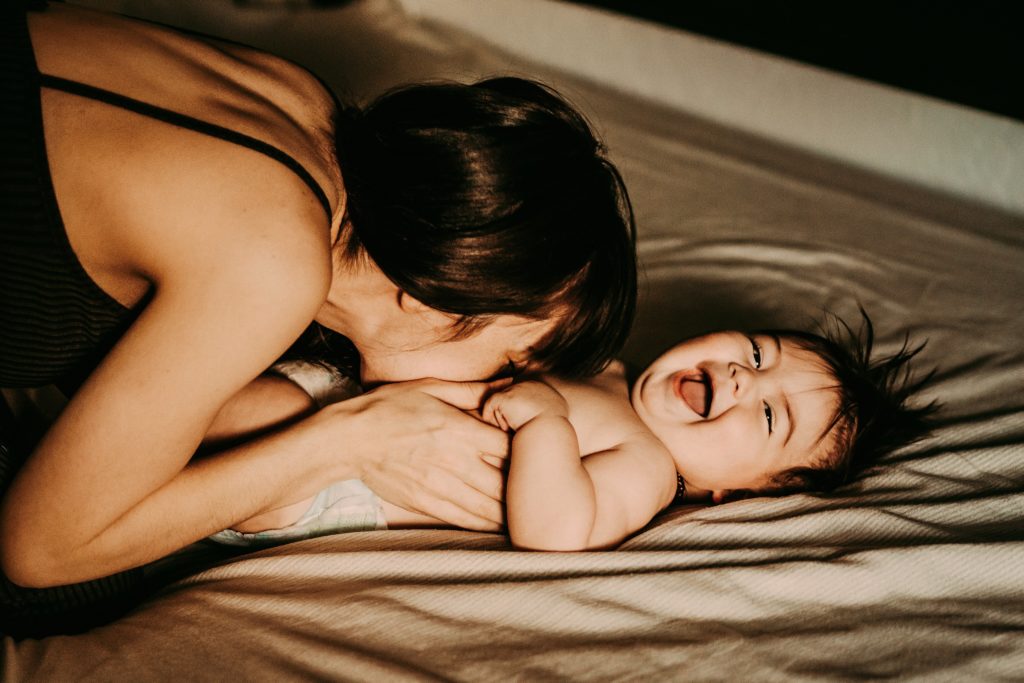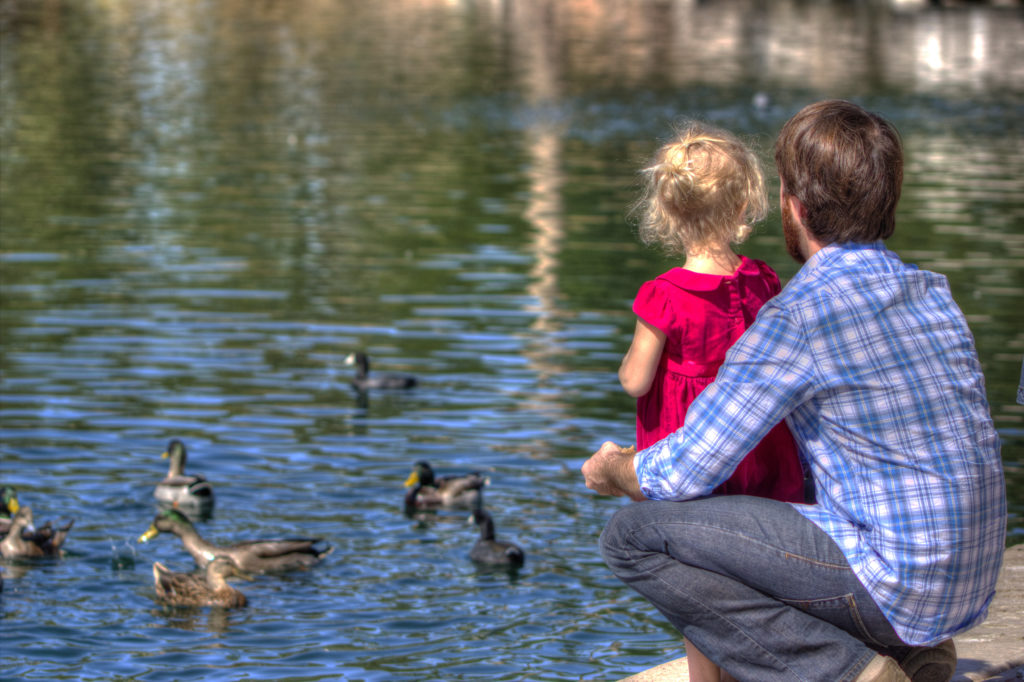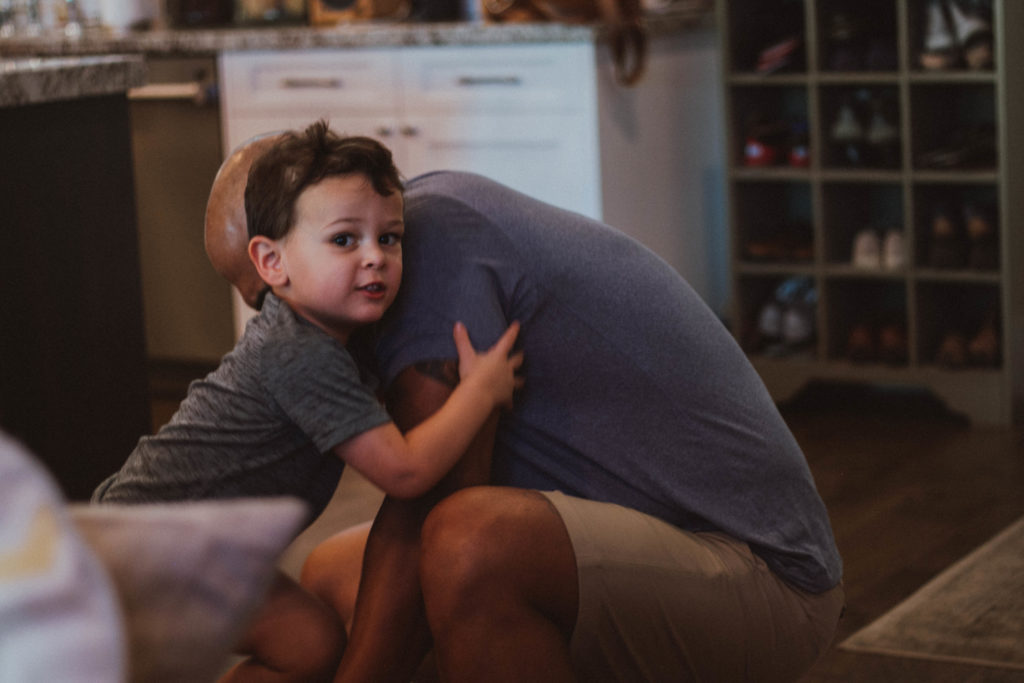Introduction
Separation anxiety appears to come in many different forms – whether it’s your child crying at the school gate, screaming as you leave for work, or just not wanting to be put down on the ground whilst you cook. It can be intensely frustrating for parents.
I remember a few years back when my sister rang me in tears complaining that her three-year-old wouldn’t even let her go to the toilet alone… Yes, it’s true that the stress that this clinginess can bring on is often extreme. And yet I’m going to demonstrate here how the answer is remarkably simple and instant often if as parents we stop focusing on what is wrong with the child and come back to ourselves. Are you surprised to hear this? It can seem counterintuitive, but once you have seen how it works for yourself, you will be applying it in so many aspects of your day!
Separation Anxiety – So what did I say to my sister?
You may well be wondering what the outcome of the call was. Well, I could hardly contain my laughter because to an outsider sometimes things look obvious (though of course I’m not that mean) and I understand that the time after birth can be very difficult and stressful. All I said was just put your daughter (aged 3) outside the toilet on the floor. Tell her you’re going to close the door and pee alone, and then you will come out. She hung up, followed the instructions, and rang me up in utter amazement that her daughter was playing happily in the corridor when she emerged.
How do I get my child to be more independent?
I had an Australian client years ago with a four-year-old son, no father in the picture, who understandably got very anxious every time his mum went out to work. He had intense separation anxiety including screaming, kicking, and tears. He was left with a Balinese nanny who spoke little English. Despite this, we resolved the screaming and clinging in a different way seemingly, although really it’s the same principle. My client worked on being clear in herself that she needed to go to work, that this was non-negotiable, and on withdrawing her anxiety away from her child. She energetically detached her emotional concern from him, stayed in her center, and calmly communicated what she would be doing. She walked out of the door, left him with the babysitter, and there was no more screaming.
How does it work?
You may wonder why this worked or how it can work at all. Doesn’t the detachment create more clinging? Well, no, in fact, it’s the opposite. The Australian mother didn’t put up a hard deflective wall. She simply became very solid and clear in herself. By removing her energetic focus from the child but staying present in the room she enabled him to feel much safer about their connection. He could feel that he was safe too, because her anxiety was no longer touching and influencing him. He got it instantly.
Is it really that easy? Can it really be that simple? Yes, sometimes it can. Not always, yet in the majority of cases it is. Recently I spoke to another mother who was needing to work with clients online during the day, but her infant son was insisting on sitting on her lap, which didn’t work for her professionally. She was at her wit’s end for what to do. Until we talked about how she could withdraw her emotional energy from him back to herself, owning all her worry that he needed her, and just ask him to play with his toys on the floor for a while.
When we next spoke she was beaming – she simply decided that it was going to work, things needed to change, and she made it happen. She stopped worrying, shifted her own attention back to herself, established clear boundaries, and created the safe environment that the child needed. It worked at the first attempt, much to her surprise.
So what is separation anxiety then?
People often think separation anxiety is something to do with the child, and their unwillingness to let the parent out of their sight, or not wanting to feel alone. From my own observations with caring, stable parents it is actually mostly not that, but rather to do with the parent’s own need to stay connected with the child. (I am not saying that this is always the case – in children with severe trauma and other developmental disturbances there may be more complicated factors at play that require professional intervention as well as parental education).
When children are born they are very vulnerable, and making sure they survive is paramount for the parent, who becomes often hyper-sensitive. Parents think about newborns day and night and attend to their every whimper. This is correct and appropriate and can carry over well into toddlerhood, though parents also get very tired and sleep deprived in the process. Usually, eventually, something has to give. Either out of simple physical necessity or the need to be alone, somehow the parent manages to separate from the child and get some alone time and rest. However, sometimes this is a very painful process where the child cries and resists. It makes you wonder, then what happens in the families where it is not difficult – where the child learns to play independently in a peaceful, contented way?
Is it about the child’s temperament?
Is it the temperament of the child that affects this ability? Well, it might be sometimes. But more often than not it is the parent’s emotional state that affects the outcome. Parents who are anxious, worried, concerned, or whatever other label we want to use, transmit the feeling to the child that they need the child close. This logically makes the infant insecure every time the parent is further away, and they protest.
Similarly, a parent who doesn’t worry, but is available and relaxed, yet centered and focused, can easily get on with a task whilst the child plays independently. This doesn’t mean being cut off or isolated from the child – on the contrary, there can be easy and immediate verbal responses, and offers of assistance if required. The parent is physically, mentally, and emotionally present which is what the child needs to feel. So the child learns that they are safe, the parent is there if they need them, and they can explore more and more of their own experience and space without interruption.
How is your Ability to Separate?
Most of the time, technically separation anxiety therefore is related to the inability of the parent to stop worrying, or to own their anxiety, and let the child have their own space. And of course whilst they are worrying, they are not transmitting the calm presence the child needs to feel to settle. This trains the child into a certain habit of dependence. However, this habit can be almost instantly reversed, especially in young children.
Imagine the parent like a strong magnet, which is what the child experiences when a parent is worrying, anxious or concerned. It draws the child close. Yet when you switch the magnet off – the parent relaxes – the charge simply falls away, and there is space for the child to move freely.
But how do I make this change when I’m so used to something else?
It’s really much easier if you imagine that you are like a sea anemone or octopus. You have sticky tentacles or suckers reaching out toward your child at all times to check on them. These suckers are your parental concern or anxiety. All you do is imagine pulling them back towards your core, like when a sea anemone out of water retracts back to form a blob. No reaching. Lots of space for the child.
Incidentally doing this also brings you directly back into your body, your center, and in touch with sensation. It helps you be focused and collected, which in turn helps you set a clear verbal and energetic boundaries. So when you say to your child I’ve put some colours and paper out for you in the playroom, and I’d like you to do some drawing for the next twenty minutes whilst I cook, your child has no hesitation in fulfilling your request. Because you aren’t offering any other options energetically.
The difference between chaos and peace
This is just a brief illustrative article to teach you some tools and share a profound insight. When you practice this and see the effect it has on your children, you will maybe also see the other areas of life where you can apply the same principle. If you “connect” with your children by energetically reaching out to them you may flood them with your emotion and you will have the chance to observe chaos in your home.
As you center yourself and get clear, are internally calm, and have a sense of your edges then you can connect with them for real, by allowing them to have their own emotional experience separate from you whilst you have yours. This is what enables them to stay connected with themselves and feel happy, explore, and grow. It is a really profound gift to give, and will often lead to relaxed creative play and exploration.
Conclusion
What we have outlined here is a simple solution for resolving separation anxiety that relies on the parent literally separating themselves from the child emotionally. This is what creates the calm and safety that the child needs in order not to feel anxious! It looks counter-intuitive initially. However if you apply what you have read here and practice, you will make some amazing discoveries for yourself. Don’t be fooled that these changes take time – they don’t. They are instant when you really come back into yourself and detach energetically. If you want help with a particular situation that you are not managing to resolve, then please message me directly. I hope you have fun exploring with your family.
Please feel free to share but always credit the author and source. © Mira Watson









